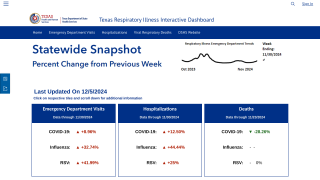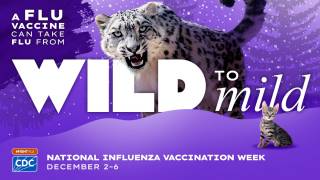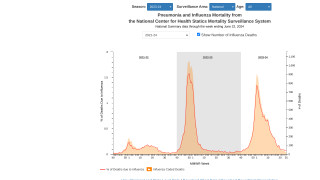CDC Flu News for March 1, 2019

According to new data from the Centers for Disease Control and Prevention (CDC), the 2018-2019 flu season vaccines have been 47 percent effective for the general population and 61 percent effective for children.
While the CDC does not express a preference between vaccine types this season, the American Academy of Pediatrics (AAP) recommends using inactivated influenza vaccine as the primary vaccine choice.
Moreover, the CDC and AAP both recommend everyone 6 months and older get the flu shot each year.
These recommendations are important since 56 influenza-associated pediatric deaths have been reported to the CDC during the 2018-2019 season.
Fifteen of these pediatric deaths were reported during week #8.
In aggregate, the CDC is estimating the current flu season’s impact through February 23, 2019, as follows:
- 20,400,000 – 23,600,000 symptomatic illnesses
- 9,500,000 – 11,100,000 medical visits
- 252,000 – 302,000 hospitalizations
- 16,400 - 26,700 flu-related deaths
Separately, the CDC reported the key influenza indicators for the week ending February 23, 2019, which are as follows:
- The percentage of respiratory specimens testing positive for influenza viruses in clinical laboratories increased slightly. Nationally, during week 8, influenza A(H3) viruses were reported more frequently than influenza A(H1N1) viruses.
- During the most recent three weeks, influenza A(H3) viruses were reported more frequently than influenza A(H1N1) viruses in HHS Regions 2, 4, 6 and 7.
- The majority of influenza viruses characterized antigenically are similar to the cell-grown reference viruses representing the 2018–2019 Northern Hemisphere influenza vaccine viruses.
- The vast majority of influenza viruses tested (>99%) show susceptibility to oseltamivir and peramivir. All influenza viruses tested showed susceptibility to zanamivir.
- The proportion of outpatient visits for influenza-like illness (ILI) remained at 5.0%, which is above the national baseline of 2.2%. All 10 regions reported ILI at or above their region-specific baseline level.
- New York City and 33 states experienced high ILI activity; the District of Columbia and eight states experienced moderate ILI activity; Puerto Rico and eight states experienced low ILI activity; one state experienced minimal ILI activity, and the U.S. Virgin Islands had insufficient data.
- The geographic spread of influenza in Puerto Rico and 49 states was reported as widespread; the District of Columbia and one state reported local activity; the U.S. Virgin Islands reported sporadic activity, and Guam did not report.
- A cumulative rate of 32.1 laboratory-confirmed influenza-associated hospitalizations per 100,000 population was reported. The highest hospitalization rate is among adults 65 years and older (91.5 hospitalizations per 100,000 population).
- The proportion of deaths attributed to pneumonia and influenza (P&I) was below the system-specific epidemic threshold in the National Center for Health Statistics (NCHS) Mortality Surveillance System.
In the USA, antiviral medications and various flu vaccines are available in most pharmacies.
The CDC Vaccine Price List provides private sector vaccine prices for general information. And, flu vaccine discounts can be found here.
Vaccines, like any medicine, can have side effects. Vaccine patients are encouraged to report negative side effects of vaccines to the CDC.
Our Trust Standards: Medical Advisory Committee

























